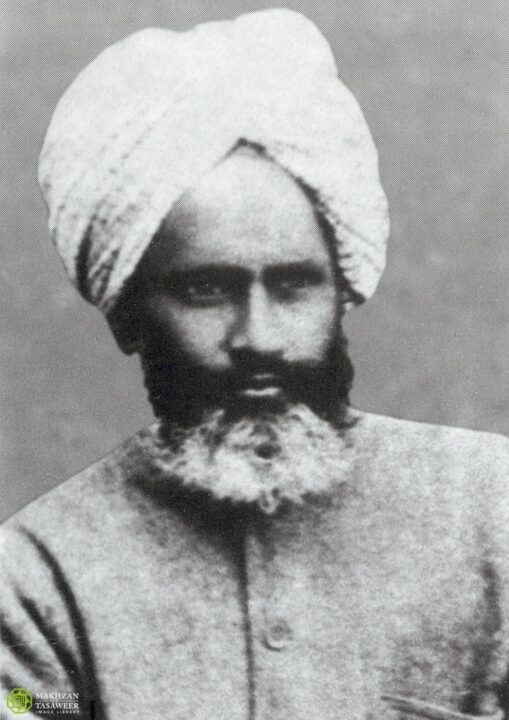In this third year of Al Hakam, we will present a selection of incidents from the blessed life of the Promised Messiah, peace be upon him, this time, with some more details
30 March 1893: The Promised Messiah, peace be on him, sent a detailed letter to a staunch enemy, Maulvi Muhammad Hussain of Batala. In it, Huzooras detailed the idea of a challenge that would decide who was truthful between the two parties. The challenge was to write a commentary on a specific verse of the Holy Quran and see who proved the best and most insightful. Huzooras was clear in his claim that no one would be able to come close to his insight of the Holy Quran as Allah Himself had guided him. With this proposal, Huzooras sought to put an end to the ongoing, long and severe opposition that Maulvi Muhammad Hussain held. If the Promised Messiahas lost, then, he said, he would burn all his books and would repent from all his claims. (Maktubat-e-Ahmad, Vol I, pp. 359-362)
30 March 1905: The Promised Messiahas approved Hazrat Mufti Muhammad Sadiqra as the editor of the newspaper Al Badr, after the demise of its pioneering editor, Hazrat Munshi Muhammad Afzalra. Huzooras expanded his expectations for the future of the newspaper with the new setup.
31 March 1906: The Paisa Akhbar was a popular Urdu newspaper published in Lahore, British India. The paper was established in 1887. On this date, the Paisa Akhbar published the Promised Messiah’sas acclaimed prophecy about the upcoming heavenly signs and global sufferings:
پھر چلے آتے ہیں یارو زلزلہ آنے کے دن
[O friends, the days of earthquakes are nigh again]
This prophecy that was encapsulated in a poem was spread far and wide through the circulation of this newspaper.
31 March 1891: The Promised Messiahas wrote a letter to Hazrat Hakim Maulvi Nuruddinra, his devout follower, and guided him about his proposed religious debate with Jagan Nath. In the letter, the Promised Messiahas also shared his ongoing health issues and his longing to see him soon.
April 1889: The Promised Messiahas was still in Ludhiana after accepting Bai‘at of his followers and establishing the Jamaat. It is reported that Huzooras went to another main city of India, Aligarh, for a week in the month of April. The correspondence with Hazrat Munshi Rustam Alira establishes that Huzooras arrived back in Ludhiana on 15 April.
April 1899: The Promised Messiahas started writing his book Masih Hindustan Mein (Jesus in India). In this book, the Promised Messiahas traced in detail the final journey of Jesusas from Palestine to Kashmir. Through this research, new revelations about the supposed death of Jesusas and what happened came to light. It became clear that Jesusas had travelled to the lost tribes of Israel, finally reaching Kashmir where, as many sources confirmed, a prophet was buried in Srinagar, Kashmir. This book was published in 1908 by Anwar-e-Ahmadiyya Press, Qadian.
April 1902: Zia-ul-Islam Press in Qadian published the Promised Messiah’sas Urdu book Dafi-ul-Bala wama‘yaru ahlil-Istifa (Defence against the plague and a criterion for the elect of God). The plague broke out in the Punjab in full fury in 1902. The plague also had entrenched itself in the Punjab so firmly that it was taking a heavy toll. About 20,000 people died of the plague every week. All areas outside a two-mile radius of Qadian were contaminated with this disastrous disease. Qadian stood like a sanctuary in the whole region.
April 1896: In Shawwal 1313 AH, the Promised Messiahas wrote a letter, most probably in Persian, to the then Amir of Afghanistan. This letter was not published in Huzoor’sas lifetime. The rough rendering of the Urdu version is found in Muhammad Bakhsh’s (Deputy Inspector of Police, Batala) papers by his grandson (Sirat-ul-Mahdi, Vol. III, p. 79 [1939]) and its English version can be seen in Life of Ahmad by Hazrat Abdur Rahim Dardra, on page 186, under the heading, “Letter to Amir”.
1 April 1901: The Promised Messiahas was adamant in propagating the message of Islam to the Western world. To attain this important goal, alongside other plans, he desired to publish a magazine in English. To manage the magazine, he formed an association. This was named Anjuman Ishaat-e-Islam [Society for the Propagation of Islam], which held its first meeting on this date. The meeting decided to name the magazine, “The Review of Religions”, which continues to be published today. Hazrat Hakim Maulvi Nuruddin Sahibra was appointed as the president of the Anjuman.

2 April 1885: The Promised Messiahas wrote a postcard to Hazrat Munshi Rustam Alira. In it, Huzooras mentioned that he was sending him a copy of an English letter and an English announcement, which he could share with God-fearing and wise people.
Huzooras shared with Munshi Sahibra that the English material on tabligh was being sent to almost all Hindu Pundits and Christian missionaries of India, and each one was being sent at a cost of 4 annas via registered post.
2 April 1888: The Promised Messiahas sent a postcard to Hazrat Munshi Rustam Alira, in which, apart from exchanging other important points of mutual interest, Huzooras expressed surprise that one of the letters written by Munshi Sahibra reached him after a gap of two months.

